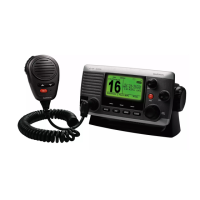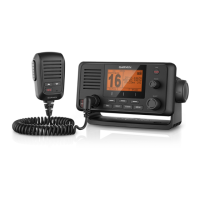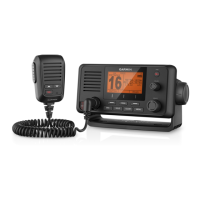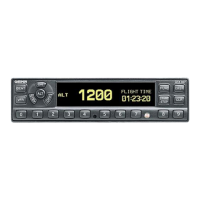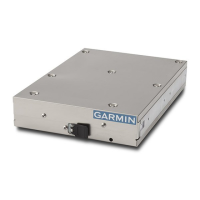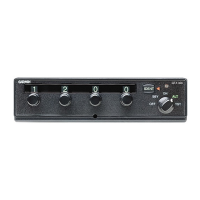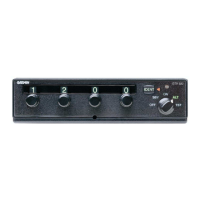Do you have a question about the Garmin VHF 315 Series and is the answer not in the manual?
Configures automatic or manual power-on using the PWR button.
Adjusts audio volume using the VOL/SQ key and dial.
Filters background noise by adjusting radio sensitivity for clearer reception.
Switches between USA, International, or Canadian frequency bands for radio operation.
Chooses specific communication channels based on the selected frequency band.
Guides channel selection, clarity verification, and broadcasting via PTT button.
Searches for active channels, pausing on broadcasts until the signal stops.
Stores selected channels for quick access, allowing unlimited saved channels.
Deletes previously saved channels from the radio's memory.
Scans only the channels previously saved by the user.
Enables continuous listening to priority, current, and second-priority channels.
Assigns a channel other than 9 as the radio's secondary priority channel.
Allows quick switching between current working and priority channels like 16/9 or 16+.
Adjusts radio sensitivity (LOC/DIST) for optimal reception in noisy or remote areas.
Controls transmit power, selecting between low (1W) and high (25W).
Temporarily overrides default low-power settings on specific channels for clearer transmissions.
Enables announcements or two-way communication through an optional hailer horn.
Covers automatic and manual foghorn sounding via hailer horn or external speaker.
Guides selection and listening to NOAA weather broadcasts on dedicated WX channels.
Sets audible alerts for incoming weather warnings on standard channels.
Covers entering and viewing the unique MMSI number required for DSC operations.
Details sending, acknowledging, pausing, retransmitting, stopping, and revoking distress calls.
Guides users on placing individual, group, and all-ships calls.
Covers requesting and receiving vessel positions for tracking and navigation.
Explains how to receive various call types and manage the call log.
Covers saving, viewing, adding, editing, and deleting contacts and groups in the directory.
Details settings for manual position entry, automatic channel changes, and call replies.
Guides entering ATIS identification number for European inland waterways.
Enables or disables the Automatic Transmitter Identification System feature.
Allows checking programmed ATIS identification number.
Explains how connecting to other Garmin devices enhances chartplotter and autopilot features.
Details selecting communication protocol (NMEA 0183 or NMEA 2000) for data transfer.
Filters DSC call data transmitted over NMEA networks based on vessel or directory status.
Adjusts backlight and contrast levels for optimal screen visibility.
Customizes display of latitude, longitude, time, and speed/course on the home screen.
Configures units of measure for speed, time format, and heading.
Sets radio to display local time instead of UTC, showing 'LOC' on screen.
Allows switching between USA, International, or Canadian frequency bands.
Allows renaming channels for easier identification and local meaning.
Provides information and links to official channel lists for different regions.
Explains regulations changing VHF channel numbering schemes.
Resets radio to default factory settings, erasing customizations but retaining critical data.
Explains audible and visual alerts generated by the radio for various conditions.
| Frequency Band | VHF |
|---|---|
| Waterproof Rating | IPX7 |
| NMEA 0183 | Yes |
| NMEA 2000 | Yes |
| Type | VHF Marine Radio |
| Transmit Power | 25W / 1W (selectable) |
| GPS | Yes (internal) |
| GPS Compatibility | Built-in |
| Frequency Bands | VHF |
